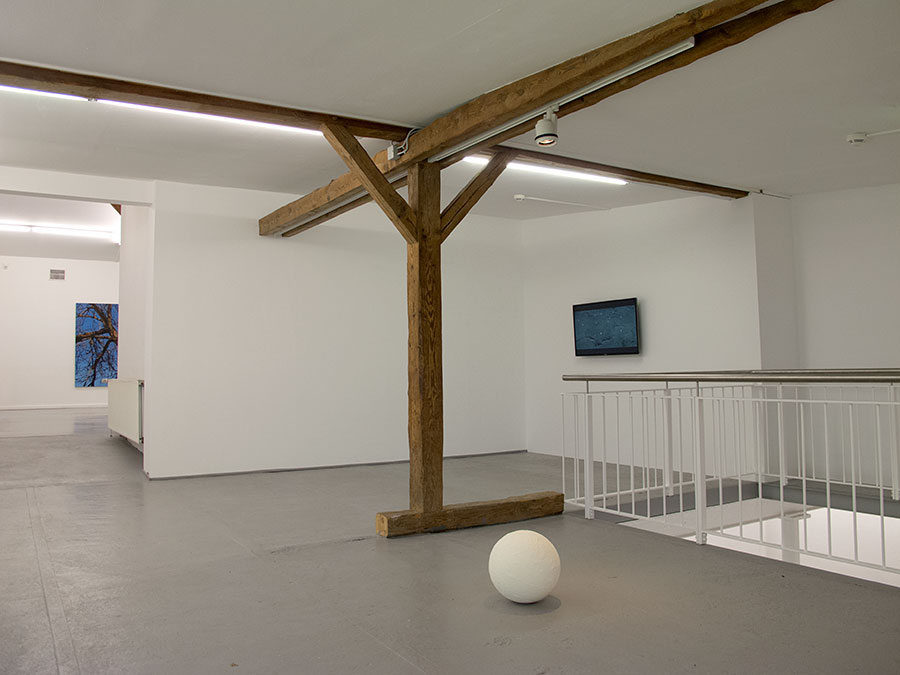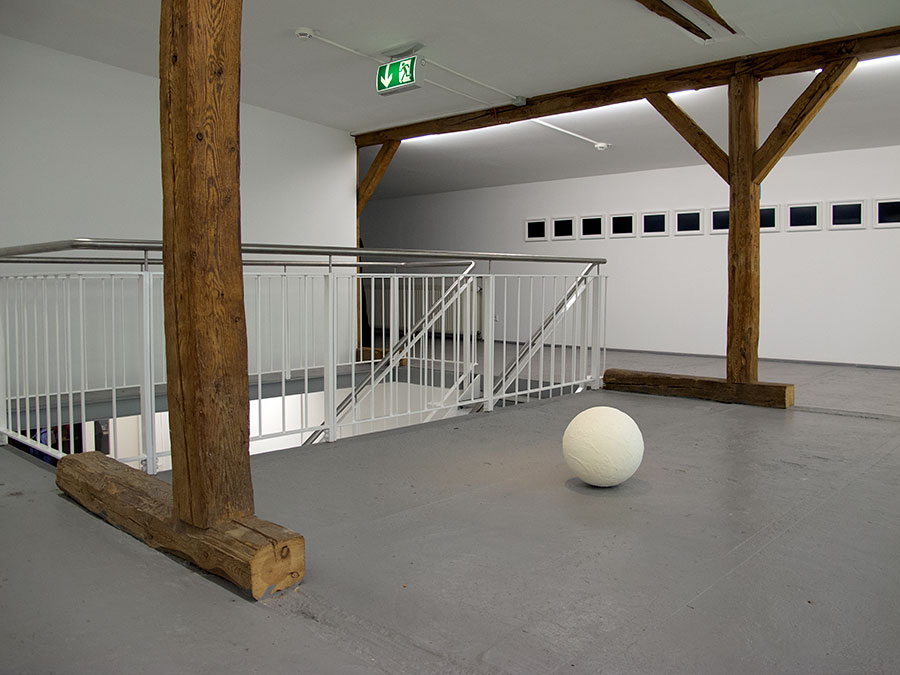

VERSTAND & GEFÜHL / Landschaft und die zeitgenössische Romantik
Kunstverein Springhornhof, Neuenkirchen, Germany
15. Juni – 18. August 2013
Download the exhibition publication as a PDF
Kuratiert von Rebecca Partridge und Bettina v. Dziembowski
Wohl kaum eine Epoche ist durch so viele Missverständnisse und Widersprüche geprägt wie die „sentimentale“ Romantik und wohl kaum eine Epoche hat unser nordeuropäisches Verhältnis zur Natur und zum Individuum so nachhaltig geprägt. Davon ausgehend setzt die Ausstellung „Verstand & Gefühl“ Motive und Ideenwelten der Romantik in Bezug zu den Arbeiten von elf zeitgenössischen Künstlerinnen und Künstlern.
Charakteristisch für die Romantik des 19. Jhdts. ist die Verlagerung des Interesses vom Verstand zum Gefühl, von der Berechnung zur Intuition, von objektiver Betrachtung zur subjektiven Wahrnehmung. Ein Anliegen der Kunst war der Ausdruck des Individuums, die Vermittlung intensiver Gefühlszustände insbesondere in Beziehung mit einer tiefen metaphysischen Verbundenheit zur Natur.
Die Romantik war jedoch nicht nur paradiesisch und schön, sie umfasste auch das Subversive von Entgrenzungserlebnissen. Künstler wie Delacroix oder Goya stellten in ihren Schreckensszenarien ungezügelte Gefühle dar. Bilder ruinösen Verfalls bei Caspar David Friedrich oder William Turner erinnerten an die Macht der Natur sich die Zivilisation zurückzuerobern.
Vorherrschend jedoch, insbesondere unter den Malern, war die Darstellung unermesslich weiter unzivilisierter Landstriche, deren idealisierte Erhabenenheit die unauflösliche Beziehung des Menschen zur Natur zum Ausdruck brachten. Ehrfurcht einflössend und beängstigend zugleich wird der Betrachter damit konfrontiert, seine eigene Position im Universum zu hinterfragen: Die äussere Landschaft dient als Metapher für eine innere Erfahrung.
In den im Springhornhof gezeigten Arbeiten erweist sich die Romantik als Weltanschauung, die in unterschiedlichsten Strategien der Aneignung aufgenommen, fortgeführt, kritisiert und transformiert wird. Dabei geht es um mehr als um die Wiederbelebung einer Skala von Motiven, die als wehmütige Versatzstücke einer glorreichen Vergangenheit in die zeitgenössische Kunst herübergerettet werden.
Die heutige Romantik ist eine Metaromantik, die nicht nur Schwermut und starke Empfindung zeigt, sondern auch ein Distanzbewusstsein, das sich in ironischen Brechungen äußert. So spielen die beteiligten Künstlerinnen und Künstler nicht nur auf den Topos der romantischen Sehnsucht nach der Natur-Idylle an, sondern auch auf die Umstände dieser Realitätsflucht. Hinter der Sehnsucht nach dem Paradiesischen, Schönen und Märchenhaften ist das Abgründige ebenso präsent wie das Wissen um das Scheitern von Utopien.
REASON & EMOTION / Landscape and the contemporary Romantic
Hardly any epoch has been marked by so many misunderstandings and contradictions as the “sentimental†Romantic era, just as hardly any epoch has so shaped our northern European relationship between nature and the indiviual. On this basis the exhibition “Reason and Emotion†explores ideas and motifs derived from Romanticism in relation to the work of eleven contemporary artists.
Characteristic of the Romanticism of the 19th Century is the shift of interest from reason to feeling, computation to intuition, objective observation to subjective perception. One aim of art at this time was the expression of the individual, the mediation of intense emotional states, particularly in relationship with a deep metaphysical connection to nature.
However, the Romantic was not only heavenly and beautiful, it also included the delineation of subversive experiences. Artists such as Delacroix and Goya presented scenarios of unbridled emotions in all their horror. Caspar David Friedrich and William Turner recalled the power of nature to regain civilisation through dark images of ruinous decay.
Predominantly, however, especially among the painters, was the presentation of immeasurably more uncivilised lands, whose idealised grandeur expressed the indissoluble relationship of man to nature. Awe-inspiring and frightening at the same time, the viewer is confronted with the question of his own position in the universe: the outer landscape serves as a metaphor for an inner experience.
In the works shown in Springhornhof the Romantic pervades, however not as a revival of a set of motifs sentimentally salvaged from a glorious past, but incorporated in a variety of strategies of appropriation, continuation, critique and transformation.
Today’s Romanticism is a Meta-Romantic showing not only melancholy and strong sensation, but also a distance, an awareness that manifests itself in ironic reflections. Thus, the participating artists play not only with the notion of romantic longing for nature-idyll, but also with the circumstances of this escapism. Behind the longing for the paradisiacal, the beautiful and fairy-tale, the abyss is just as present as the knowledge of the failure of utopias.